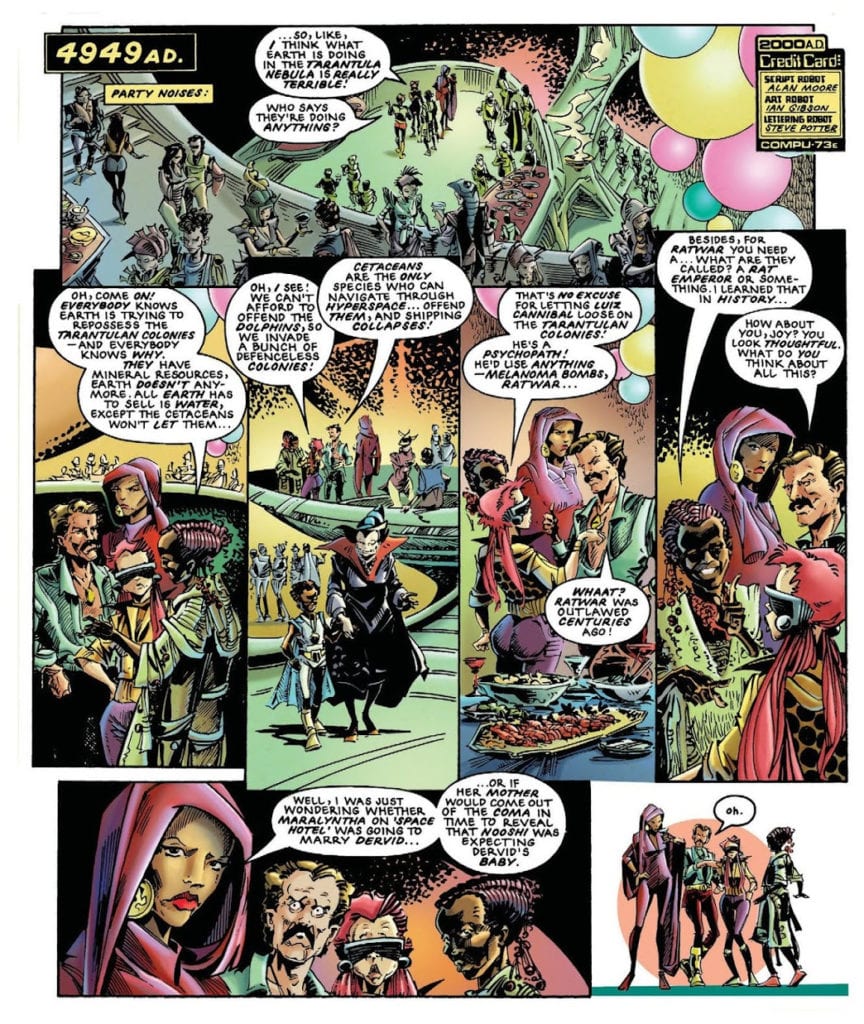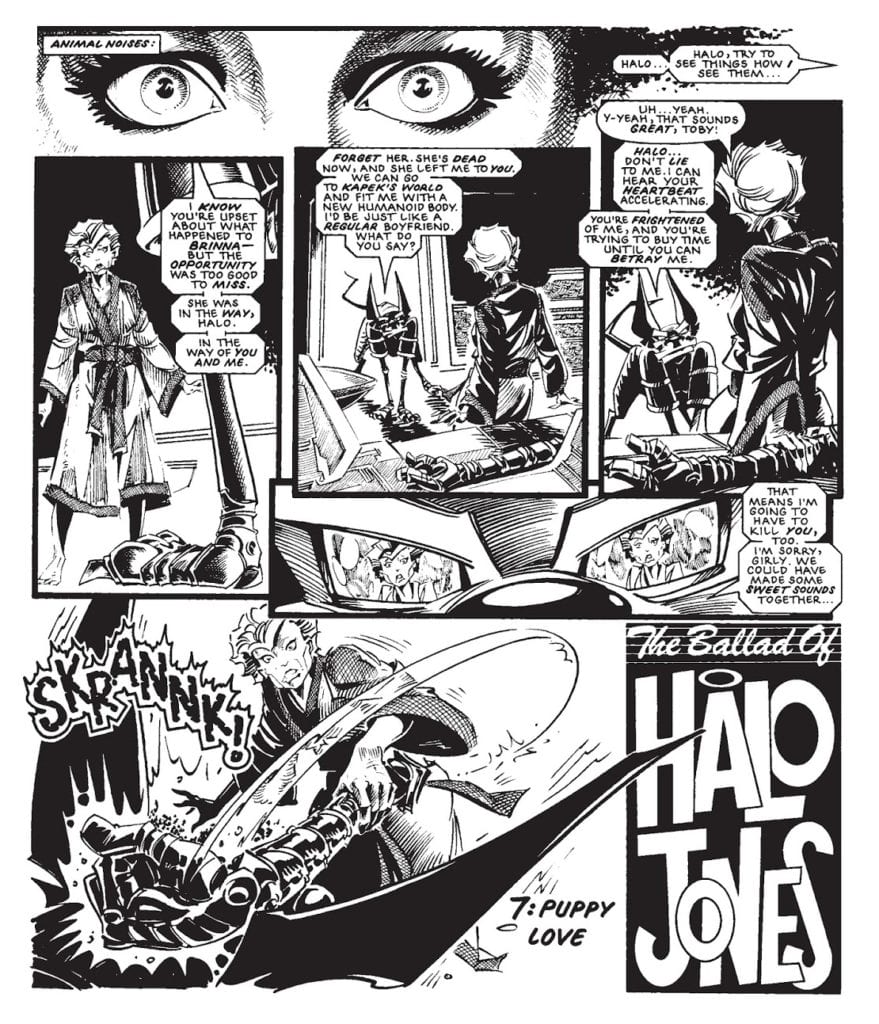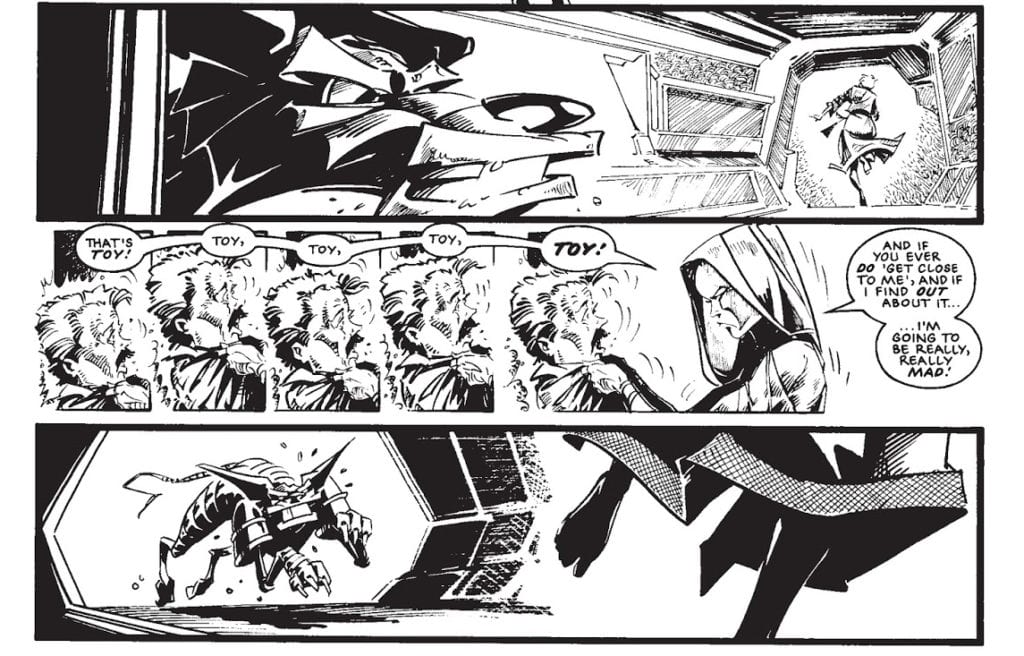Comics have a unique feature in that they are planned out entirely in advance and have control over where an audience looks. In Film, which needs to retain the sense of realism that is inherently a part of the medium, it is possible to plan shots but does not have complete control over the environment during filming, especially on-location sites. Therefore the background exists in real-time/space and contains elements of dressing that are not part of the narrative. The opposite is true in Theatre, where the limited space of a stage requires precision planning; only what is required is included in the set and props. Even then, the static nature of theatre means that the directors have less control over the audience and where they look.
In both cases, audience manipulation is possible, leading the viewer in a certain direction; however, film has elements of set not intended to be read, and theatre cannot focus attention onto the minutiae. Comics have control over both, and this is expertly demonstrated in Alan Moore and Ian Gibson’s The Ballad of Halo Jones.
In Book 2, Chapter 7: Puppy Love, we have two scenes playing out, side by side, each of which has been meticulously staged to support the narrative. Each scene contains exactly what it needs and no more.

At the Party
In the first scene on the first page of Chapter 7, there is a fancy party. The stage is large and open, dressed to represent the festivities. In the first panel, in the top right, are a selection of colorful balloons which, along with the caption on the left that reads like a stage direction, ‘Party noises:,’ indicates that the people in the panel are not passing by in a mall but are engaged in a party.
The landing levels create a sense of depth but also remind the reader about the hierarchical nature of the society that Moore is picturing. Even within this environment, there is a sense of division between the classes, and Toy is shown as being out of place as she jars against some of the other quests. Her interests are at odds with the others on her ‘level,’ and she is made to feel uncomfortable, so uncomfortable in fact that she decides to leave.
This simple stage set-up helps to convey a deeper reading of the scene, especially after the previous chapter, where we are shown Toy’s excitement as she prepares for the party. Moore goes to a lot of trouble to show the amount of time and effort she puts into getting ready, almost bullying Halo into helping her spray color her dress just so that she looks stunning for the crowds. However, once she is at the party, her appearance cannot disguise the fact that she has nothing in common with those around her. Gibson builds an environment, a stage, that serves a single purpose, and that is to accentuate the class division between Toy and the partying guests.

In the Cabin
In the second scene of the chapter, the creators take stage setting to the next level. In the scene, Toby has burst into the cabin just in time to see that Halo has discovered his secret. This means that he only has one option; to kill Halo and stop her talking. What follows is an orchestrated fight sequence that draws on the idea of theatre set dressing much more than the action film the scene is emulating.
There are a number of panel transitions that are action to action, pushing the pace of the scene. The quick-fire panels switch between viewpoints, focusing on elements that Moore wants the reader to see, in opposition to the idea of Stage Performance; however, the props and set within each panel have been painstakingly designed and placed. What is more impressive is that all of these things have been set on the stage in previous chapters, introduced to the audience through passing but placed into the reader’s memory just for this occasion. As Anton Chekhov was famous for saying, “One must never place a loaded rifle on the stage if it isn’t going to go off. It’s wrong to make promises you don’t mean to keep.”
Chekhov wasn’t referring specifically to weapons but the staging of a scene in general. Within Theatre, there is limited room on the stage. Why clutter it with items that have no use and potentially lead the audience to speculate their purpose instead of focusing on elements that are important to the narrative. Much of Film set dressing would be distracting if it were constantly on screen, which is also true of the comic. However, the artist has the ability and license to manipulate the environment for their own needs, adding or removing elements of the background as they see fit. This allows the artist to introduce a prop or element of the set in advance but then not have to feature it until it is needed.
In the case of Halo Jones, and the Chapter in question, Halo strikes outs at Toby with an electronic arm. The arm has been there, on the stage, through the narrative and was introduced a few chapters earlier in an exchange between characters. The metallic arm was placed upon the stage, the audiences’ attention drawn to it, and then left until needed. This means that the moment Halo picks it up is fluid, and as a reader, we understand what it is and why it is there. It had been engraved into the narrative just as it would be when placed on the stage in a theatre where the audience can see it. The artist then has the freedom to bring the prop into play whenever the need arises.
Everything that follows throughout this Chapter and into the next, Hounded, works in exactly the same way as the metallic arm. Props and scenery, even characters that were introduced earlier in the series through the natural motion of the plot, all come back to serve a purpose in the fight between Toby and Halo.

Conclusion
In The Ballad of Halo Jones, Alan Moore’s tightly planned script allows the artist to create a detailed plan of the ‘stage’ which runs from chapter to chapter. The elements necessary for the plot are introduced through the narrative naturally, often in passing or as throwaway comments; gags to keep the reader amused. Then, during moments of action when the plot requires a fast pace to keep the readers on edge, all of these staged elements can be brought back without any explanation necessary. As an audience, we understand what they are and why they are there, so we can accept their presence and move from panel to panel at a breakneck pace, as the creators intended.
By using a staging technique more inline with Theatre practices, that is to say, by placing everything required on the stage for the audience to see without filling the stage with superfluous set dressing, Moore, Gibson, and later Barbara Nosenzo with her superb coloring, can control the reading experience. The pacing of the narrative revolves around the characters and their interactions with each other and the set. But they also have the added ability to focus specifically on a particular prop or movement, which is a technique more specific to Film. When applied correctly, combining the two approaches gives the Comics creators complete control over their environment and their audience’s interaction with it.

